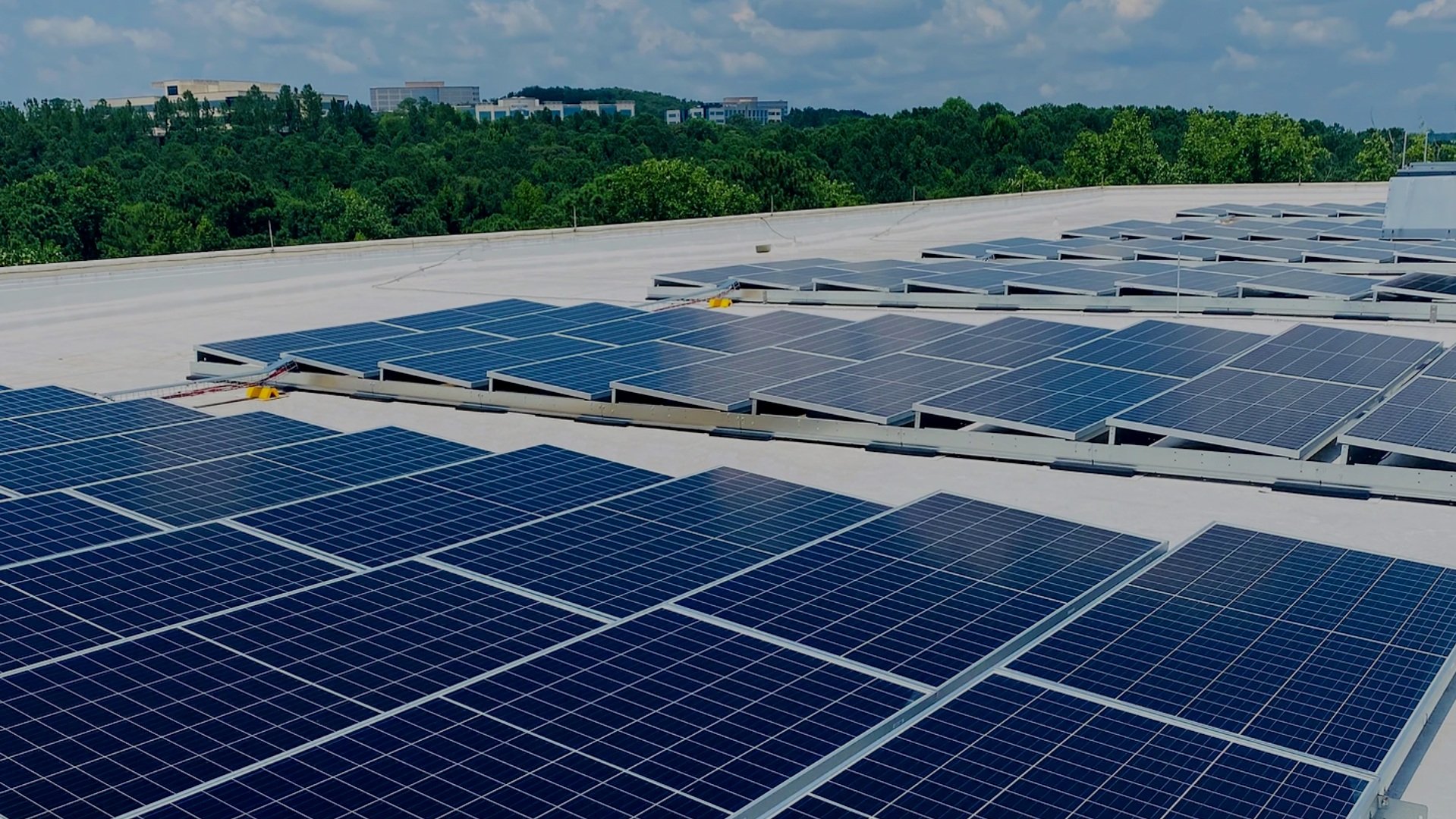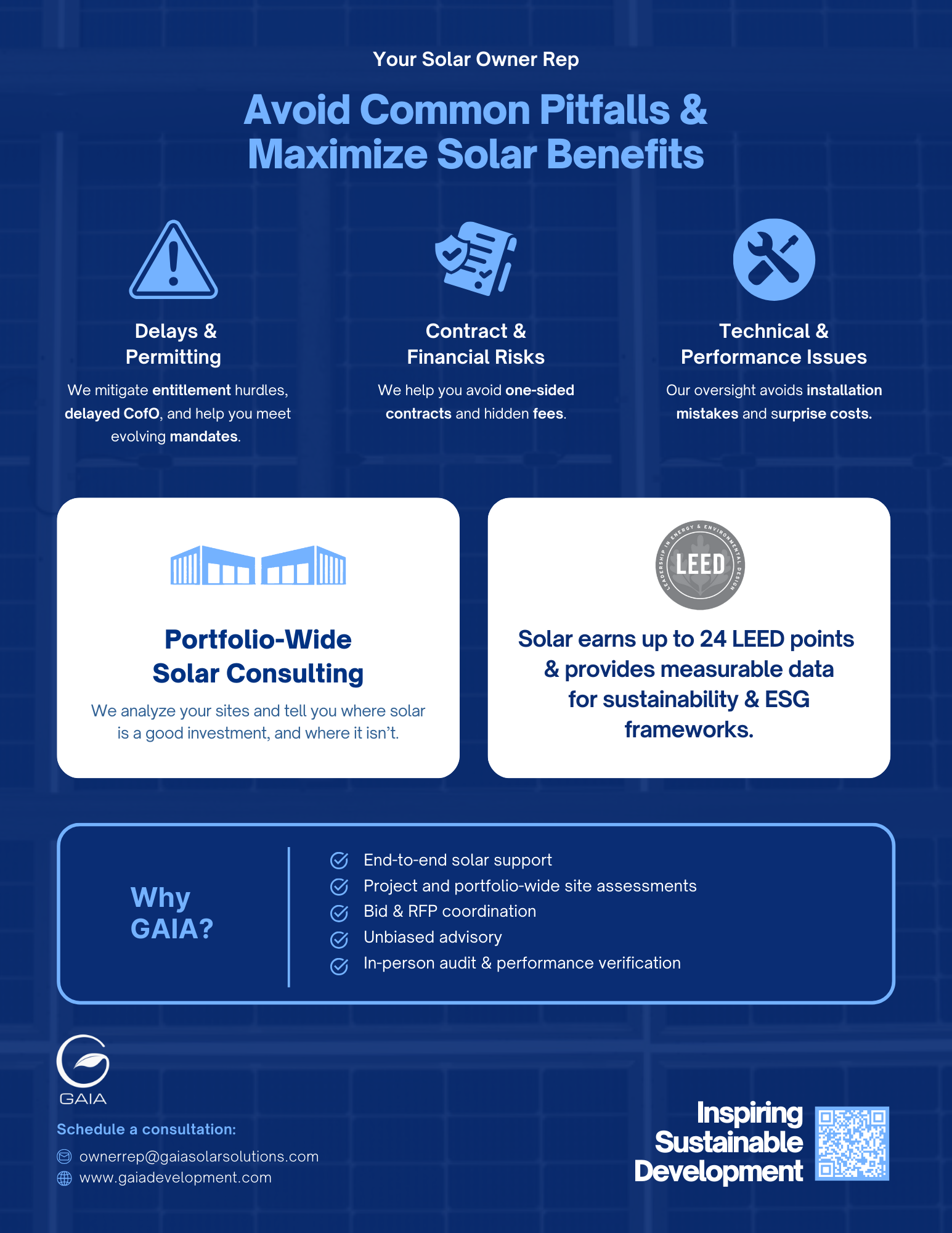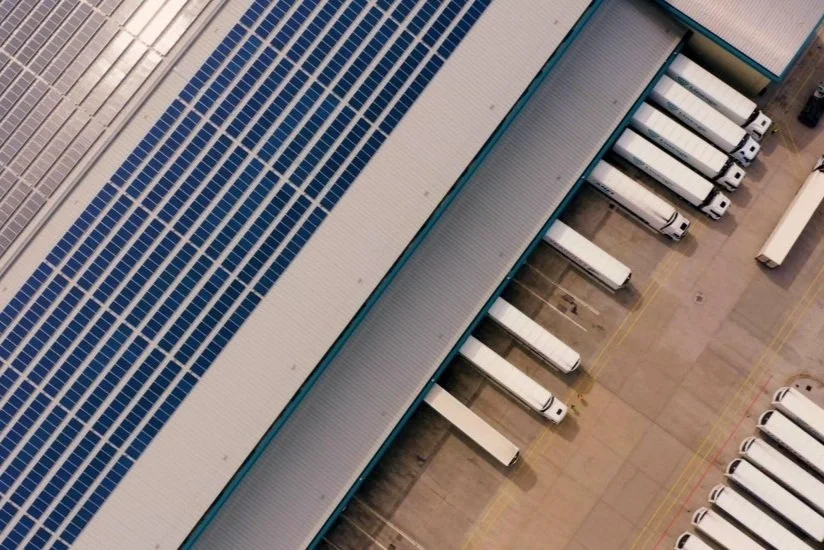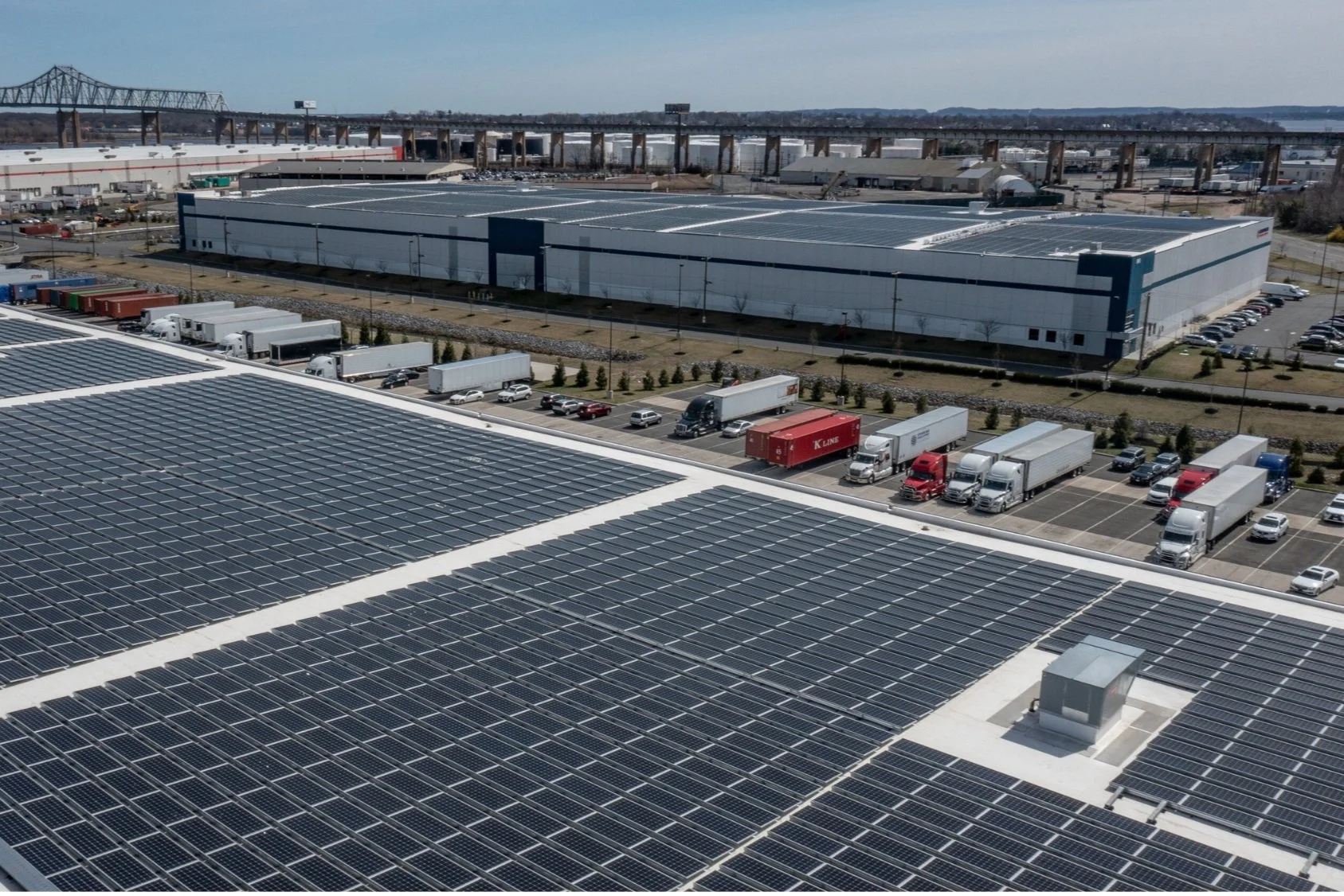
Your Solar Owner Rep.
How GAIA Supports Owners
As your Solar Owner Rep, we play a crucial role in analyzing solar size and battery requirements, coordinating solar installation vendors, avoiding pitfalls, and reducing risk. Our expertise ensures owners get the best rates and maximize the value of solar and storage.
We are your:
✓ Advocate
✓ Knowledgeable Advisor
✓ Project Coordinator
✓ Commissioning Provider
Solar Consulting Services
GAIA has created 4 pathways to help owners meet solar and battery storage requirements and determine the best solution for the highest return:
-
For California projects subject to solar and battery code requirements.
We provide performance modeling to reduce or eliminate battery requirements and right-size the solar system for compliance.
-
For individual projects with under 500kW of solar.
We act as the Owner Rep, modeling energy load, confirming solar feasibility, reviewing proposals, and supporting contractor coordination through installation and performance verification. -
For individual projects over 500 kW.
We act as the Owner Rep, analyzing site feasibility, preparing RFPs, soliciting qualified vendors, reviewing contracts and schedules, and verifying system performance and billing accuracy.
-
For portfolio-wide solar strategy and execution.
We act as the Owner Rep, analyzing multiple sites, prioritizing by feasibility, coordinating RFPs, reviewing vendor proposals and contracts, and verifying system performance and billing across the portfolio.
-
Additional services include: Commissioning, solar operation management, contract and entitlement consulting, feasability assessment, and battery size assessment.
Solar & Battery Storage Benefits:
✓ Reduce dependence on grid energy and lower operational costs.
✓ Avoid being tied to fluctuating utility rates and energy demands.
✓ Comply with regulations.
Pathway 1 for California Projects
Pathway 1 ensures commercial buildings meet California’s Title 24 solar and battery requirements efficiently by reducing solar system size and avoiding unnecessary battery storage.
We handle the complexities so you don’t have to.
Did you know? Solar is required for CofO.
In California, large-scale commercial buildings must install solar to obtain a Certificate of Occupancy under Title 24 and CALGreen regulations. Without compliance, your building cannot legally operate.
How GAIA helps you meet Title 24
✅ Our performance-based energy model can minimize system size and eliminate unnecessary battery storage.
✅ We handle Title 24 documentation and permit-ready solar design so your project stays on schedule.
✅ We oversee solar contractors and verify installation to ensure a successful approval process.
GAIA helps clients save $150,000—$300,000 on their projects with our Pathway 1 service.
— Ryan McEvoy, Principal at GAIA
California Developers
Avoid overbuilding your solar system — and overpaying for batteries you may not need.
Schedule a consultation to find out if Pathway 1 is right for your project: ownerrep@gaiasolarsolutions.com
Pathway 2 for Solar Systems under 500kW
Pathway 2 is for projects who need to install solar to meet regulations, increase LEED points, or support corporate sustainability goals.
How GAIA supports seamless solar installation:
✅ Goal Setting, Assessment & Analysis: We support owners to establish goals, assess energy load, solar size, design specs and equipment, and provide ROM for solar layout.
✅ Project Scope Outline: We develop a tailored contractor scope of work, support the proposal and contract review, and assist in selecting a qualified solar contractor.
✅ Bid Award, Installation & Operation Support: We review contracts, verify schedules, coordinate subcontractors, audit installation, ensure inspector sign-off, verify performance, and provide energy and carbon savings graphics.
Pathway 3 for Solar Systems over 500kW
Pathway 3 is for single projects with solar system sizes above 500 kW. GAIA releases a request for proposal (RFP) to help you find the best-fit vendor.
This pathway provides owners with access to power purchase agreements (PPAs).
How GAIA supports seamless solar installation:
✅ Goal Setting, Project & Data Point Review: Support owner to establish goals and review projects for feasibility.
✅ Evaluate Programs that Meet Goals: Identify feasible programs for deploying renewables including behind-the-meter (BTM) and front-of-the-meter (FTM) / community solar programs. GAIA helps guide financing options such as a power purchase agreement (PP vs. cash.
✅ Downsample Projects that Meet Goals: Assess roof design and specifications, electrical room and equipment design, and proposed switchgear and capability of the current design.
Pathway 4 for Portfolio-Wide Solar.
Pathway 4 starts by evaluating multiple sites to prioritize those with the greatest potential for solar integration, based on energy needs and goals.
GAIA coordinates a request for proposal (RFP) to help you find the best-fit vendor.
GAIA’s Approach:
✅ Goal Setting, Portfolio & Data Point Review: Support owner to establish goals, review existing portfolio and new construction projects for feasibility.
✅ Evaluate Programs that Meet Goals: Identify feasible programs for deploying renewables, including behind the meter (BTM) and front of the meter (FTM) / community solar.
✅ Downsample Projects that Meet Goals: Assess roof design and specifications, electrical room and equipment design, and proposed switchgear and capability of the current design.
✅ Tranche Projects for RFP Release Schedule: Select projects based on location, timing and feasibility for solicitations.
Additional Services
Commissioning Support:
Level I: For standard projects; basic verification and performance checks.
Level II: For complex or compliance-driven projects (ie: LEED); adds risk oversight and reliability review.
Operations & Oversight:
Solar Operation Management: Ensures performance, billing accuracy, and maintenance so owners get paid.
Contract & Entitlement Consulting: Reviews entitlement requirements and contracts to reduce owner risk.
Sizing & Feasibility:
Feasibility Assessment (site solar and/or storage): Evaluates project viability, potential savings, and system size.
Battery Size Assessment: Recommends battery sizing based on utility tariff and energy credits.












